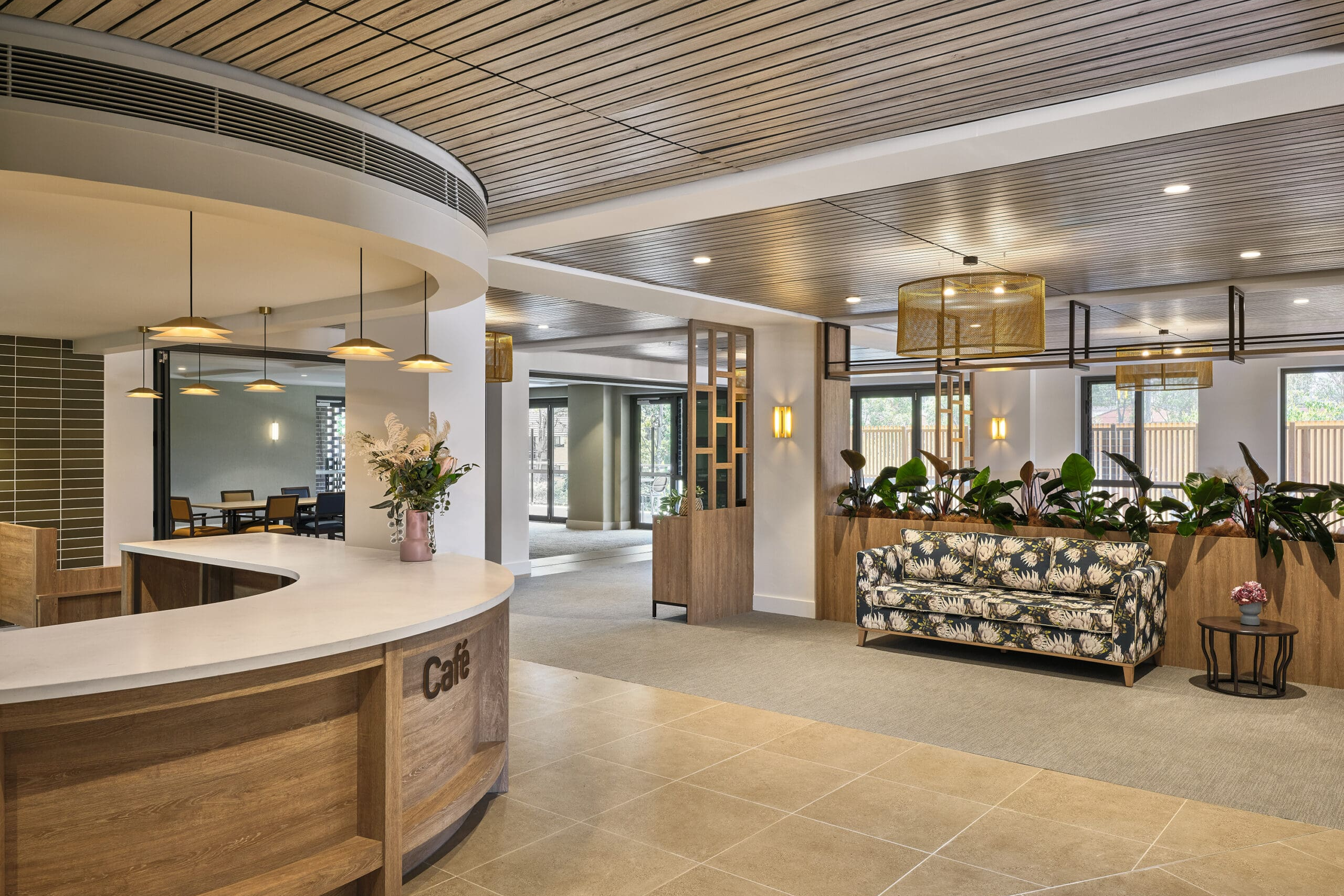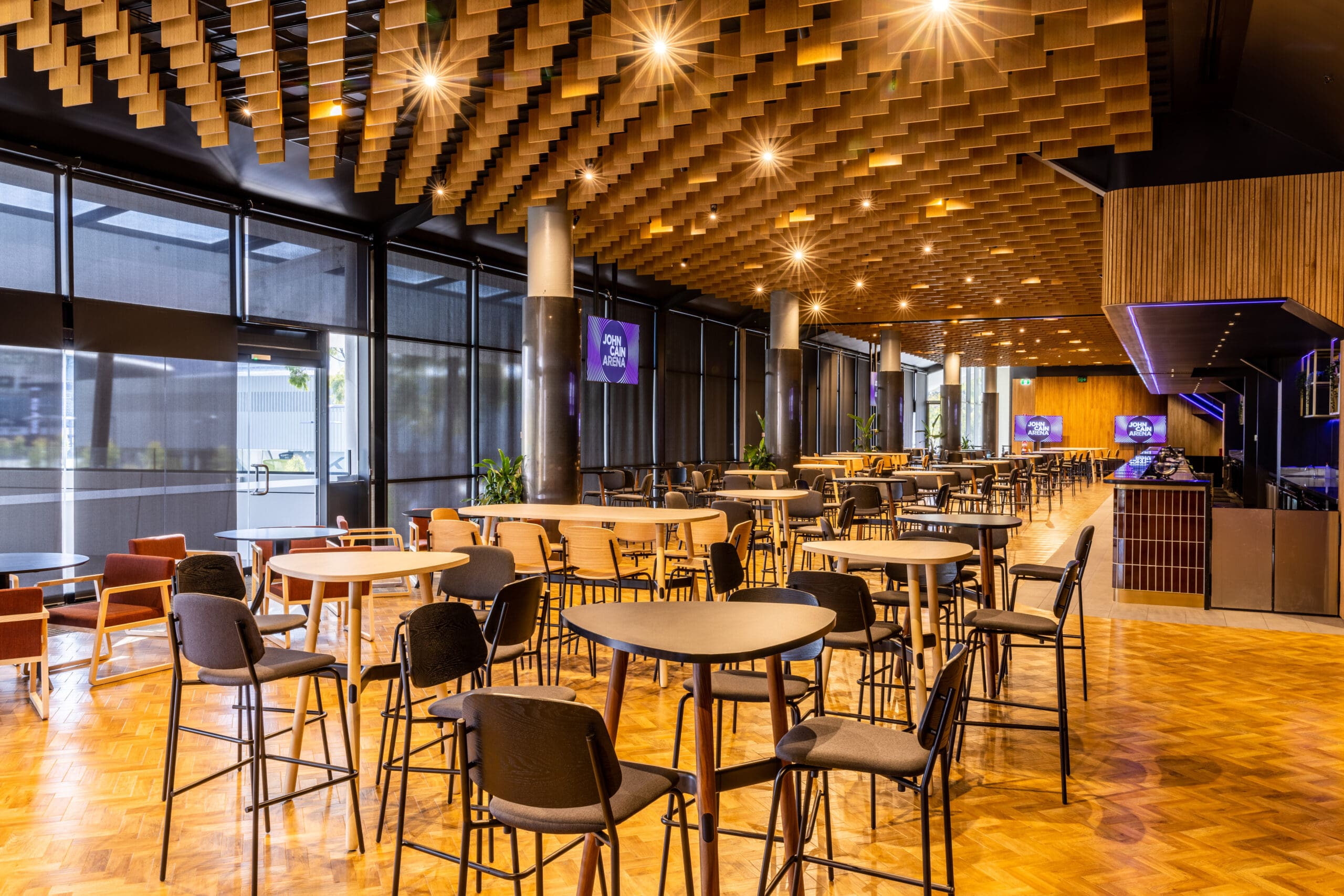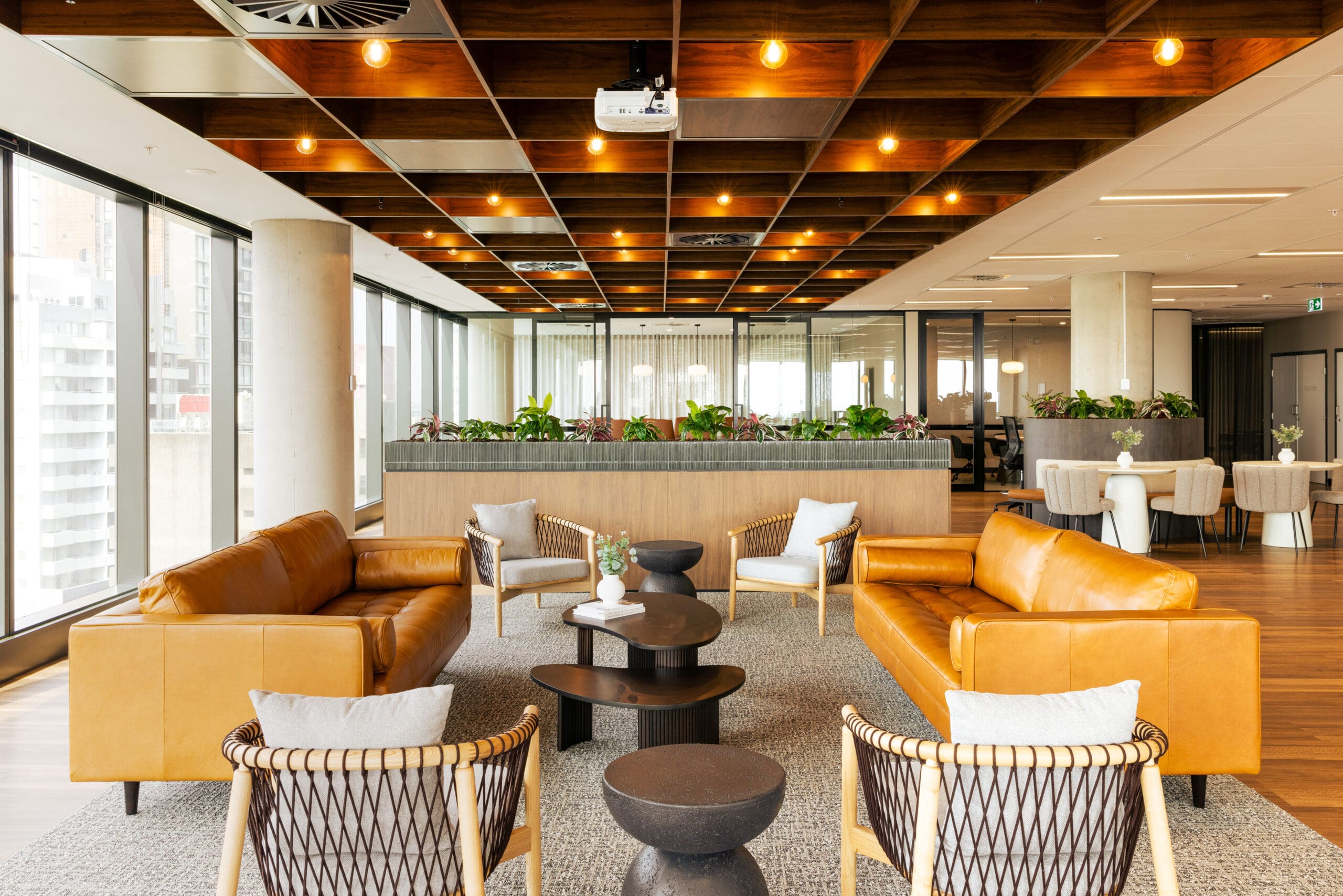Can architects combine timber and fabric acoustic specification for their wall and ceiling linings in commercial buildings?
Yes, architects can combine both.
The use of timber and fabric in acoustic design is a popular choice for architects and designers as they offer a visually appealing and sustainable option. Timber can provide warmth and texture to a space, while fabric can add colour and pattern. Additionally, both materials offer acoustic properties that help to reduce noise and create a comfortable environment for occupants.
In Australia, the acoustic performance of commercial buildings is regulated by the National Construction Code (NCC). The NCC specifies minimum acoustic requirements for various types of spaces, including offices, classrooms, and meeting rooms. Architects and designers must ensure that their design meets these requirements.
To combine timber and fabric in acoustic design, architects and designers can use a variety of materials and techniques. For example, all Supawood Acoustic Timber systems come with Integrated Acoustic Textile built in to provide a result that accomplishes both acoustic absorption and diffusion and deals with low through to high frequencies. We have been involved in projects where our timber Supacoustic panels have been placed on the ceiling while acoustic fabric has been utilised on the walls within the design – the Lara project in Victoria, designed by Guymer Bailey Architects is one such example.

Lara Prison Acoustic Timber Linings
It is important to note that the acoustic performance of a space depends on many factors, including the materials used, the size and shape of the space, and the activities that will take place in the space. Therefore, it is recommended that architects and designers consult with acoustic consultants or specialists to ensure that their design meets the required acoustic performance standards, particularly if it is mission critical. Otherwise, architects and designers can obtain direct practical advice from Supawood on more general applications. We even offer a formal CPD on the subject: Architectural Linings For Reverberation Control. Reach out here to book in your FREE formal CPD.
Timber and fabric are two common materials used in the construction of acoustic panels, slats, beams and blades and each has its own set of practical quality and maintenance differences. Let’s look at these.
Sound Absorption
Timber acoustic panels, slats, beams and blades have good sound absorption and diffusion properties and are effective in reducing echo and reverberation in a room. Timber acoustic systems such as the Supawood range are effective in absorbing all Low, Mid and High range frequencies. Supawood can cater for both popular broad-brush NRC (Noise Reduction Coefficient) and αw (Weighted Sound Absorption Coefficient). However, fabric panels are effective in absorbing mid and high frequencies. Weighted Sound Absorption Coefficient) αw measures the capacity of a product to absorb the energy of a sound wave. Like the NRC coefficient, it varies from 0 to 1, with 0 for zero absorption and 1 for total absorption.


Examples of the impact of design on the acoustics of a space
Aesthetics
Timber acoustic systems are usually more visually appealing and can be used to create a warm and natural look. They can be finished in a large range of Concept Veneers to match popular timber species like Tasmanian Oak, Textured Concept Veneers, a wide range of Natural timber Veneers or painted to match the decor of any design. Supawood also developed a revolutionary leading finish called Mimic where a high-resolution graphic of any design is supplied by the design professional and is then applied to Supawood panels whilst maintaining the scale and vibrancy of the original supplied graphic. Supawood timber acoustics systems are renowned for being design flexible to meet the designers requirements, whether straight, curved, multi-curved or twisted on two planes whilst curved - Supawood has created thousands of easy to install plug-and-play kits meeting rigorous and demanding design criteria. Fabric panels offer a wide range of colours, patterns, and textures to choose from. They can be customized to match the decor of the room and can also be printed with custom designs.
There are some fabric beam products that are supposed to resemble timber beams and slats; they vary in quality, appearance and durability. Supawood’s Maxi Beam, which was originally created to provide the architect and builder a low weight, easy to install beam with the chunky, heavy duty appearance of solid timber, without the need for structural framing other than simple furring channels or suspended ceiling grids, has gained widespread acceptance over many years by the design and building community as it retains its form and aesthetic over time - nobody has ever picked it in a public space for anything other than solid timber. It is also Group 2 Fire Compliant.
Durability
Timber acoustic systems are more durable and resistant to wear and tear than fabric panels. They can withstand impacts and are less likely to be damaged. As an example, Supawood timber acoustic systems are in use in over 500 schools in Australia plus universities, community centres, airports, train and bus stations, performing arts centres, major hospitals, workplaces, shopping centres, multi-residential and hospitality venues. Fabric panels are more prone to damage from scratches, tears, and punctures.
Maintenance Differences
Cleaning: Timber panels, slats, beams and blades are relatively easy to clean and maintain. They can be wiped down with a damp cloth and mild detergent if required. Fabric panels require more care and attention during cleaning. They should be vacuumed regularly to remove dust and debris and spot cleaned with a mild detergent.
Replacement: If a timber acoustic system is damaged or needs to be replaced, it can be easily removed and replaced with a new panel, slat, beam or blade as they are mechanically fixed with screws, using both concealed and exposed applications depending on the designers choice. Fabric panels are more difficult to replace as they are usually glued or stapled to a frame.
Moisture and Fire Resistance: All Supawood timber acoustic panels, slats beams and blades are manufactured with E0 and E1 rated moisture and fire resistant MDF and the finished systems are live tested to AS 5637 using the AS 9705 Full Scale Room Burn Test to meet Group 1, 2 or 3 requirements and AS 1170.4 Section 8 to meet Seismic requirements. Some fabric panels are Group Fire tested and resistant to moisture.
In summary, timber and fabric panels have their own set of advantages and disadvantages when it comes to practical quality and maintenance. Timber acoustic systems offered by Supawood offer good flexible design and sound absorption capabilities and are visually appealing, as well as being durable and fully compliant to the relevant Group Fire, Seismic and Acoustic Australian Standards. Fabric panels offer mid to high range sound absorption, a wide range of aesthetics, but require more care during cleaning and are more prone to damage.
Disclaimer: All the information on this website - www.supawood.com.au - is published in good faith and for general information purpose only. Supawood does not make any warranties about the completeness, reliability, and accuracy of this information. Any action you take upon the information you find on this website (Supawood), is strictly at your own risk. Supawood will not be liable for any losses and/or damages in connection with the use of our website.
From our website, you can visit other websites by following hyperlinks to such external sites. While we strive to provide only quality links to useful and ethical websites, we have no control over the content and nature of these sites. These links to other websites do not imply a recommendation for all the content found on these sites. Site owners and content may change without notice and may occur before we have the opportunity to remove a link that may have failed.
Consent: By using our website, you hereby consent to our disclaimer and agree to its terms.



